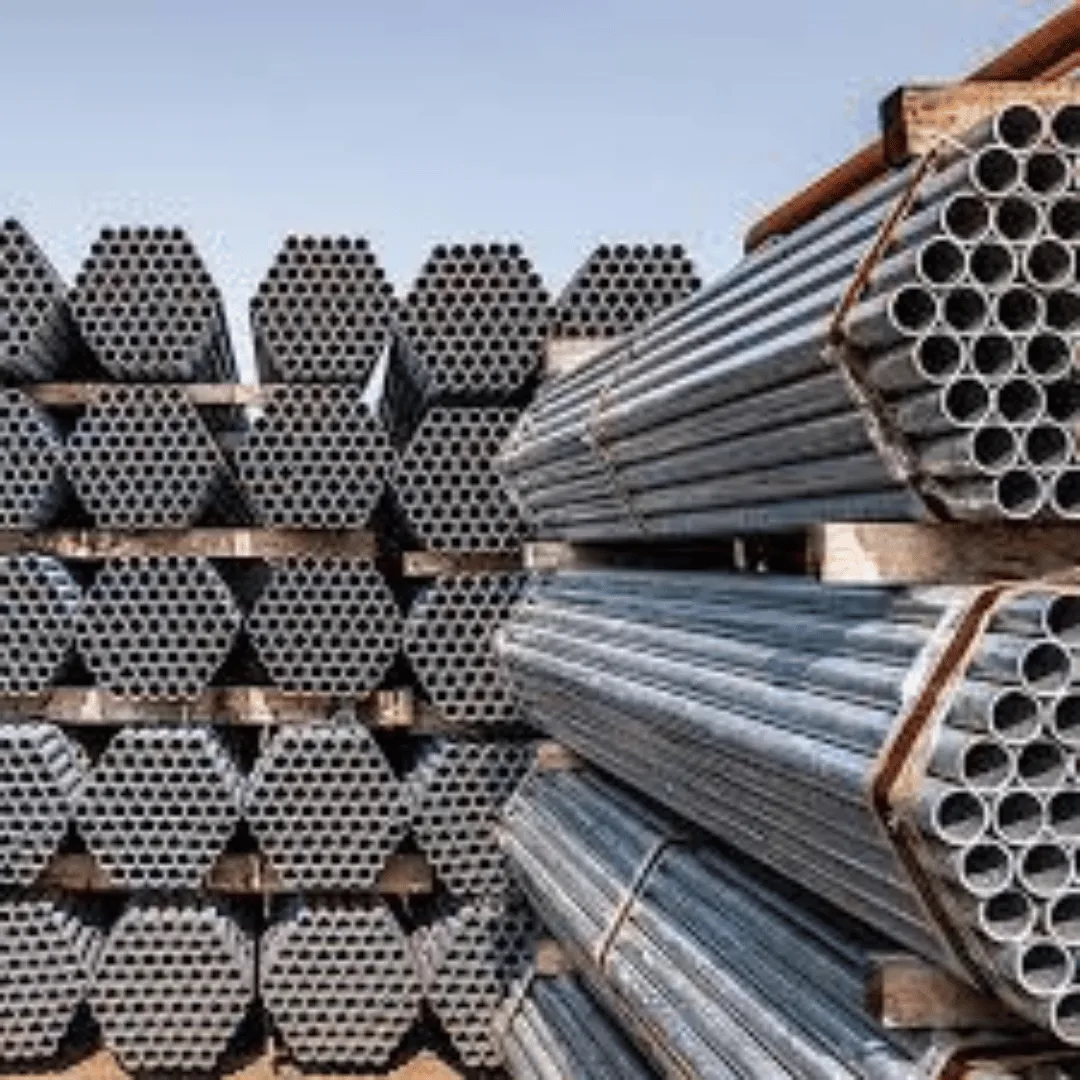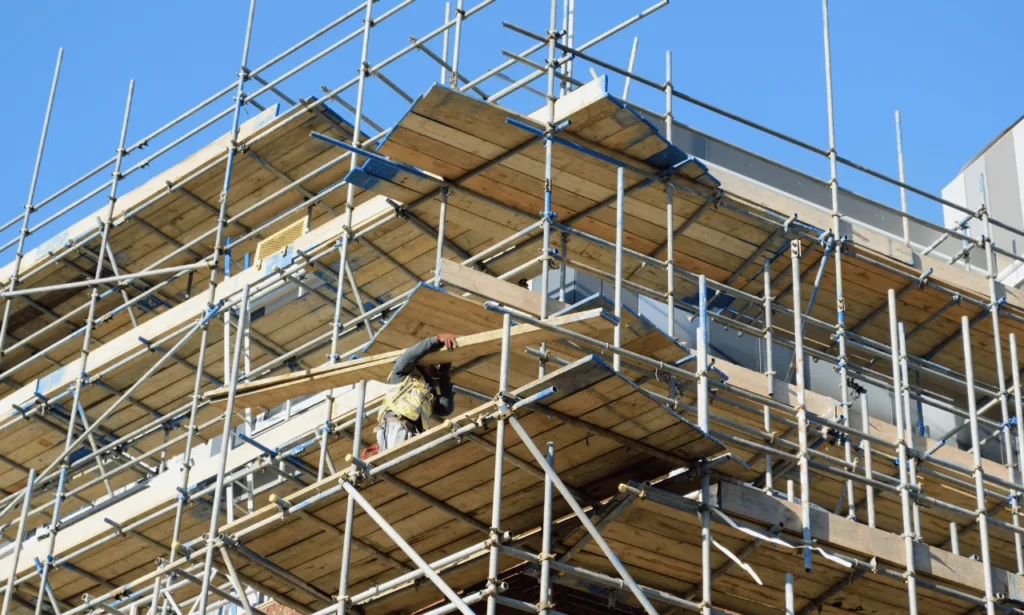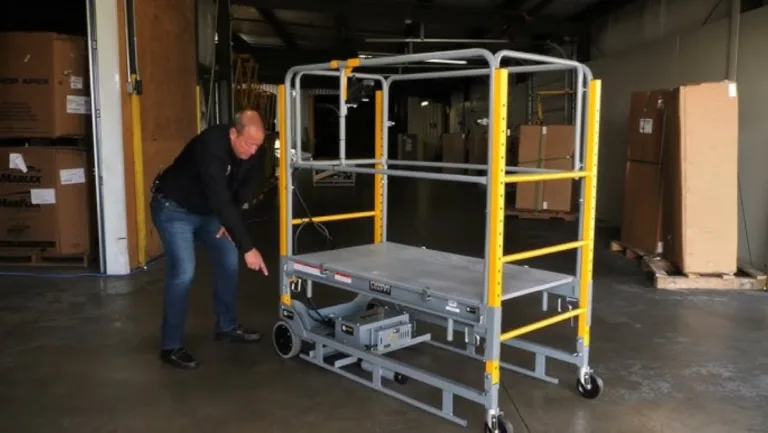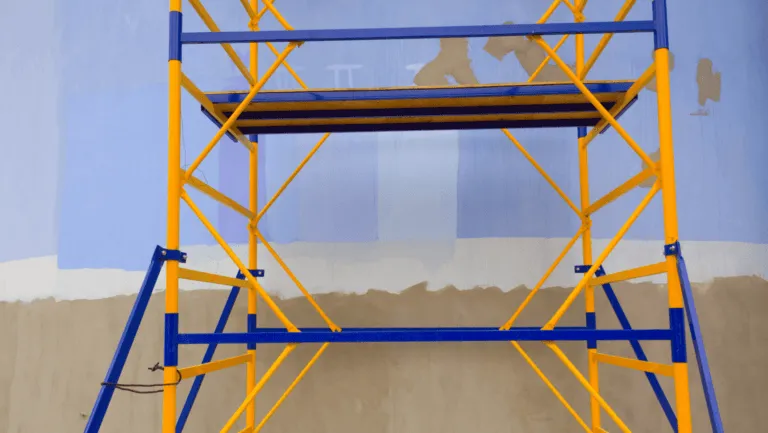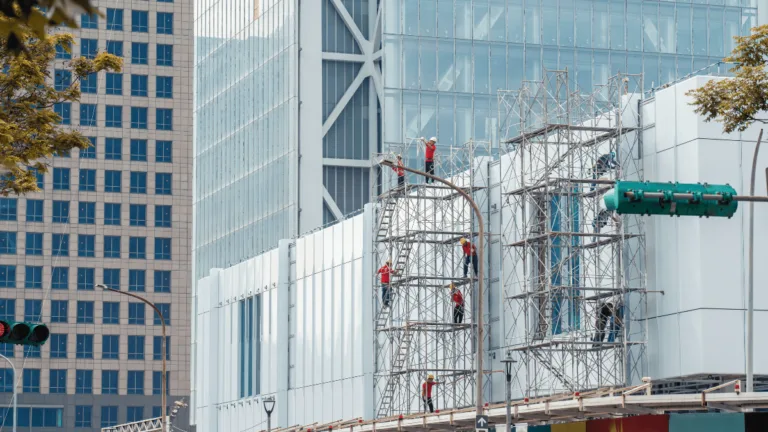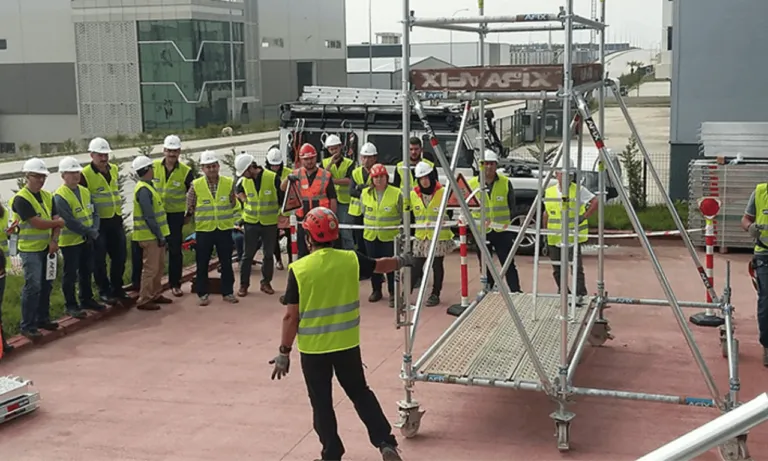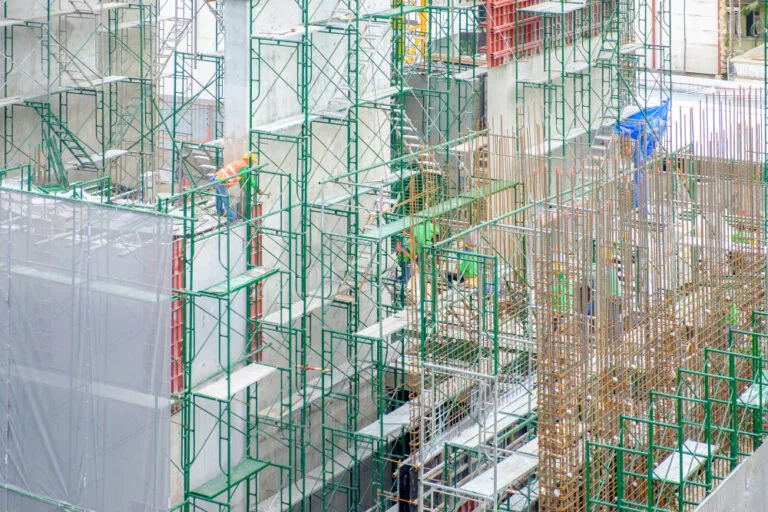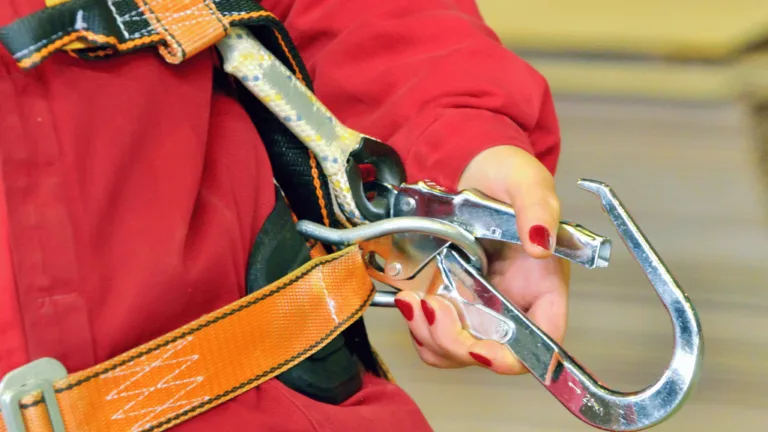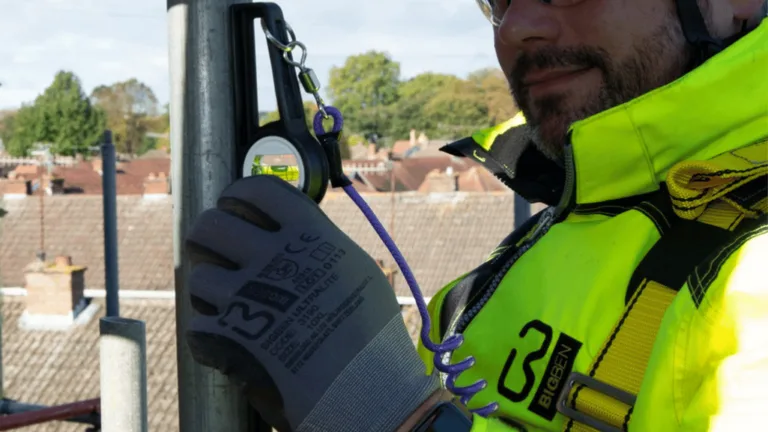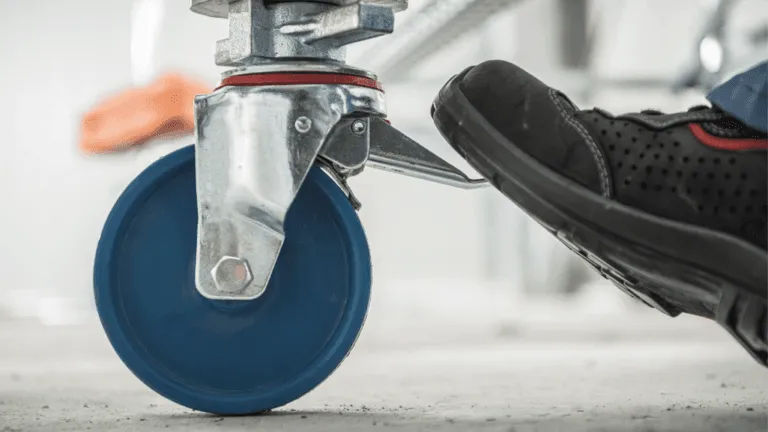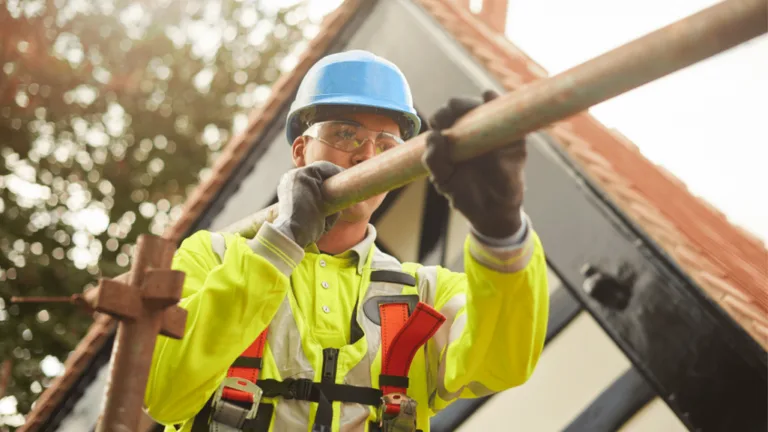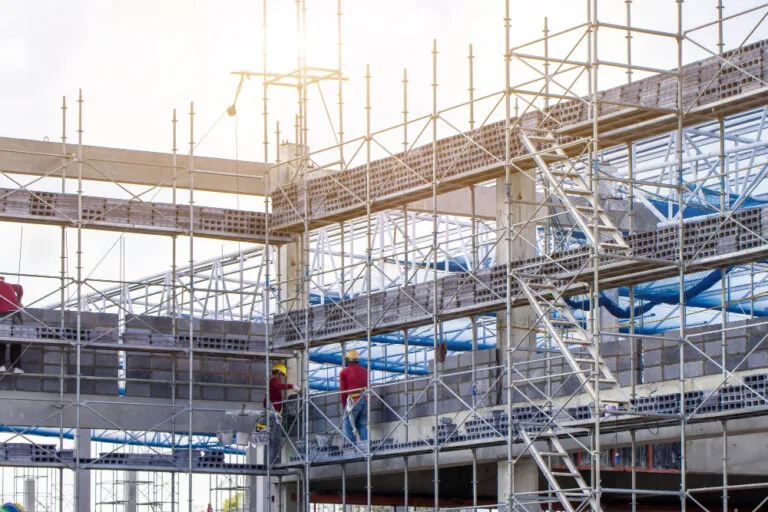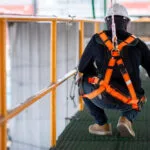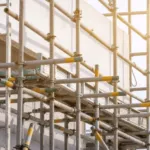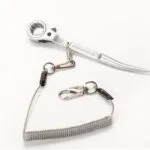Phone:
(+65)8319-0742
In construction, scaffold tubes are key for making temporary support structures and access platforms. These scaffolding pipes are vital for keeping workers safe and efficient on site. They come in different sizes and lengths for various uses and fit with many couplers and clamps for easy setup.
Scaffold tubes are made from strong materials like galvanized steel or aluminum. This makes them durable for construction needs. They help workers reach high places safely and provide a solid base for tools and materials.
Key Takeaways
- Scaffold tubes are indispensable for creating temporary support structures and access platforms in construction.
- Scaffolding pipes come in various sizes and lengths to suit different applications.
- Scaffold tubes are compatible with a range of couplers and clamps for easy assembly.
- High-quality materials like galvanized steel and aluminum ensure the strength and durability of scaffold tubes.
- Using scaffold tubes promotes worker safety and efficiency on construction sites.
Introduction to Scaffold Tube
Scaffold tubes are key in modular scaffolding systems. They are the main support for temporary structures and falsework. These tubes give the needed strength and stability for safe work at heights.
They are also used in formwork, helping to shape concrete structures. Scaffold tubes are vital for the success of construction projects.
The history of scaffold tubes in construction is long. Tube and clamp scaffolds have been around since the early 20th century. They have become more popular than wooden scaffolds because of their durability and strength.
Today, they are widely used in many parts of the world. This includes Asia, the Middle East, and large parts of the United Kingdom.
Scaffold tubes are designed to meet specific load-bearing requirements, with materials categorized into three types of duty: light duty for 25 lbs./sq. ft., medium duty for 50 lbs./sq. ft., and heavy duty for 75 lbs./sq. ft.
Tube and clamp scaffolds are known for their strength and adaptability. Modern system scaffolding is also gaining popularity. It is quicker to assemble and has fewer errors.
However, setting up and taking down tube and clamp scaffolds takes more time and effort. This is compared to modern system scaffolds.
Safety is always the top priority. The U.S. Department of Labor’s Occupational Safety and Health Administration (OSHA) stresses the importance of qualified individuals setting up scaffolding. It also emphasizes the need for safety features like guardrails and personal fall arrest systems.
| Scaffold Tube Type | Characteristics |
|---|---|
| Tube and Coupler Scaffolding | Versatile, high load-bearing capacity, adaptable to complex structures, requires more experience and longer assembly time |
| System Scaffolding | Flexible, strong, easier to assemble than tube and coupler scaffolding, requires expertise and training for proper construction |
In summary, scaffold tubes are vital for safe and efficient construction. They provide the necessary support and stability. By following safety guidelines, construction professionals can ensure safe work environments.
Types of Scaffold Tubes
Scaffold tubes are key in the construction world. They give support and stability for scaffolding. The main types are galvanized steel and aluminum, each with its own benefits.
Galvanized Steel Tubes
Galvanized steel tubes are a top pick for scaffolding. They’re strong and last long. The zinc coating stops rust and weather damage.
These tubes are perfect for outdoor work and tough weather. They keep scaffolding strong and safe, even with heavy loads.
Aluminum Tubes
Aluminum scaffold tubes are getting more popular. They’re light, making them easy to move and set up. This is great for projects that need quick setup.
Aluminum tubes are strong for their weight. They also don’t rust easily. This makes them a solid choice for many construction jobs.
| Type of Scaffold Tube | Key Properties | Common Applications |
|---|---|---|
| Galvanized Steel |
|
|
| Aluminum |
|
|
Choosing the right scaffold tube depends on the project’s needs. Look at the load, weather, and how easy it is to move and set up. Both galvanized steel and aluminum have their advantages. The best choice depends on the project’s specific needs.
Scaffold Tube Sizes and Lengths
Understanding the sizes and lengths of scaffold tubes is key for your project. They come in standard diameters and lengths for different construction needs.
Standard Diameters
Scaffold tubes have two main sizes: 48.3mm and 33.7mm. The 48.3mm size, or 1 ½ inch, is the most used. It meets European standards for quality.
Aluminum tubes also have a 48.3mm diameter but are thicker. They weigh about 1.65kg per meter, making them light for scaffolding.
Available Lengths
Scaffold tubes come in lengths from 30cm to 300cm. This range helps in building scaffolding of various heights and shapes. Common sizes include:
- 20 feet (6.0m)
- 16 feet
- 13 feet
- 10 feet
- 8 feet
- 6 feet
- 5 feet
Suppliers also offer custom sizes and cutting services. This lets customers get the exact lengths they need. This service is often free, making it easy for builders to get what they need.
With many sizes and lengths, scaffold tubes are versatile for projects. Whether you need standard or custom sizes, you can find what you need. This ensures you have the right materials for your project.
Scaffold Tube Compatibility with Couplers and Clamps
Scaffold tubes work well with many couplers and clamps. This makes it easy to build strong and safe scaffolding. Bolt clamps, wedge clamps, and v-clamps are common. They fit different tube sizes, especially 48.3 mm.
Bolt clamps have a bolt and nut for adjustable tightness. The bolts and nuts are usually 17 to 23 mm. Wedge clamps use a wedge that slides into place for a tight fit. V-clamps have a V shape that fits around the tubes, making a strong connection.
The scaffolding industry keeps improving coupler designs. New coupler technologies include swivel, fixed, right-angle, T, and sleeve types. These advancements make building scaffolds easier and safer.
Scaffold tubes and couplers must meet strict quality and safety standards. Steel tubes follow EN 39, BS 1139, and ASTM A513-07. Forged couplers must meet BS 1139 and EN 74 standards. This ensures their strength and durability.
| Coupler Type | Weight (kg) | Bolt/Nut Size (mm) |
|---|---|---|
| Swivel Coupler | 1.05 | 19 |
| Fixed Coupler | 0.95 | 17 |
| Right-Angle Coupler | 1.25 | 21 |
The right fit between scaffold tubes and couplers is key for safe and efficient construction. Using these components, contractors can build scaffolding that meets specific job site needs. This ensures the scaffolding works well and keeps workers safe.
Advantages of Using Scaffold Tube in Construction
Scaffold tubes are key in construction because of their many benefits. They are made from high-quality materials like galvanized steel. This makes them strong and durable, keeping temporary structures safe and reliable.
Using top materials means scaffold tubes last longer and work better. This makes them a smart choice for construction projects because they save money in the long run.
Scaffold tubes are great because they can be used in many ways. They work for building facades, bridges, and more. Their design lets contractors change them up for different projects.
This flexibility saves time and money. The same tubes can be used in many ways, making projects more efficient.
Durability and Strength
Scaffold tubes are incredibly strong and last a long time. They’re made from galvanized steel, which can handle heavy loads and bad weather. The steel is also protected from rust, keeping the scaffold strong for years.
These tubes provide a solid base for workers to do their jobs safely. This reduces the chance of accidents and injuries on the job site.
Versatility in Applications
Scaffold tubes are very versatile in construction. They can be used for many projects, from homes to big industrial sites. Their design makes it easy to change them up for different buildings.
Contractors can quickly set up and take down scaffold structures. This saves time and money. Scaffold tubes are a must-have in construction, helping to keep work safe and efficient.
| Scaffold Type | Cost Comparison | Assembly Time |
|---|---|---|
| Pipe Scaffold | Relatively inexpensive | Longer assembly time |
| System Scaffold | More expensive | Faster assembly time |
| Steel Scaffolding | Budget-friendly | Easy assembly and dismantling |
The table shows how different scaffolding types compare in cost and time to assemble. Pipe scaffold is cheap but takes longer to set up. System scaffold is pricier but faster to put together.
Steel scaffolding is a good choice because it’s affordable and strong. It’s easy to set up and take down, helping projects move along smoothly.
Scaffold Tube Safety Regulations and Guidelines
Scaffold tube use is tightly regulated for worker safety in construction. About 2.3 million construction workers often use scaffolding. Following safety rules is key to avoiding accidents and injuries.
Manufacturers give safety guidelines for their scaffolding products. These guidelines follow standards like ANSI/ASSP A10.8-2019. This standard covers different types of scaffolding systems and their safety needs.
The right scaffolding type depends on several factors. These include load needs, access, fall protection, and work levels. Light-duty scaffolding supports up to 25 lbs./sq. ft., while heavy-duty scaffolding supports up to 75 lbs./sq. ft.
Tubular welded frame scaffolding is popular for its easy setup. Modular scaffolding is better for industrial settings with obstacles.
Fall protection is crucial for safety. This includes guardrails and personal fall arrest systems. Guardrails are needed for platforms over 7 1/2 ft. Employers must train workers on scaffold safety and correct setup.
| Scaffold Type | Maximum Height (ft) |
|---|---|
| Wood (frame/post) | 60 |
| Tube & coupler/Tubular (welded) | 125 |
Cal/OSHA has rules for supported scaffolds. These include metal, tower, and ladder jack scaffolds. Each scaffold must support its weight and four times the maximum load.
Platforms must be at least 20 inches wide. They should not slope more than 2 feet vertical to 10 feet horizontal. They also must not be slippery.
Scaffolding is often among the top 10 most cited OSHA standards. This shows the need for strict safety rules.
For scaffolds over three stories or 36 ft. high, a Cal/OSHA permit is needed. These setups must be supervised by a qualified person. Daily inspections and training are key to safety.
Following safety rules and regulations helps reduce scaffolding accidents. This ensures the safety of workers who use scaffold tubes every day.
Assembling Scaffold Structures with Tubes and Clamps
Building strong scaffold structures needs good materials and the right assembly methods. Tube and clamp scaffolding is a top pick for its strength and flexibility. By following the right steps, workers can make sure their scaffolds are safe and work well.
Basic Assembly Techniques
The key to a good tube and clamp scaffold is how the tubes are connected. Important steps include:
- Make sure all tubes are tightly attached to base plates and other parts
- Use right-angle couplers for straight and vertical connections
- Swivel clamps help with angled and bracing connections
- Keep the space between bays and levels about 2.0 m (6 ½ ft)
Manufacturers give detailed instructions for their scaffolding. Following these closely helps avoid mistakes and keeps the structure stable.
Creating Sturdy and Safe Structures
For a scaffold to be strong and safe, several things are important:
- Tie-ins: Scaffolds need to be tied to buildings at regular points, like every second node vertically and every third standard horizontally.
- Internal bracing: Adding bracing inside every third standard makes the scaffold more stable.
- Height matters: Scaffolds over 10 m (33 ft) need special engineering to support loads. Scaffolds over 15 m (49 ft) need engineering approval.
| Scaffold Component | Dimensions | Material |
|---|---|---|
| Scaffold Tubes | 2″ to 16″ lengths | High-strength steel (SG52 / EN10025-2:S355 / S420) |
| Right Angle Coupler | 2″ x 2″ | Forged steel |
| Swivel Clamp | Fits 2″ tubes | High-quality steel |
By following these rules and using top-notch parts, teams can build scaffolds that are both strong and safe. This gives workers a reliable place to work efficiently.
Scaffold Tube Manufacturers and Suppliers
Choosing the right manufacturers and suppliers for scaffold tubes is key. They must focus on quality and offer good prices. These companies make sure the tubes are safe and can be shipped all over the world.
Leading Manufacturers
Many top manufacturers are known for their high-quality scaffold tubes. They use the latest technology and strict quality checks. For example, Hunan World Scaffolding Pipes tests their tubes thoroughly.
These companies provide a wide range of sizes and types of scaffold tubes. They use strong materials like Q235 and S275JR. AAIT Scaffold even offers tubes with extra protection against rust.
Worldwide Shipping Capabilities
Many manufacturers can ship their scaffold tubes all over the world. They have good logistics to make sure the tubes arrive on time. Some can even deliver big orders quickly, in just 10-15 days.
These companies are big in international markets. They work with clients in many countries. They’ve helped with scaffolding projects in places like Vietnam and the UAE.
“Our commitment to quality production and competitive pricing has allowed us to establish a strong global presence. We take pride in our ability to deliver scaffold tubes to construction sites worldwide, ensuring that our clients have access to the essential equipment they need to complete their projects safely and efficiently.” – John Smith, CEO of a leading scaffold tube manufacturer.
| Product | Diameter (mm) | Price (per unit) |
|---|---|---|
| Scaffold Tube | 48.3 | £2.99 |
| Scaffold Tube | 33.7 | £2.99 |
| Scaffold Tube Clamps | – | £1.99 – £18.99 |
These manufacturers also sell many other scaffolding products. They have everything from ringlock systems to mobile towers. This makes it easy for construction companies to find what they need from one place.
Scaffold Tube Applications in Industrial Capital Projects
Scaffold tubes are key in industrial projects, helping with both new builds and upkeep. They are vital for accessing hard-to-reach spots safely. Made from strong materials like galvanized steel, they can handle heavy loads and harsh conditions.
For safety, scaffold tubes are essential. They let workers reach high places without risk. Companies follow strict rules to ensure these tubes are safe and reliable. This way, projects can run smoothly, reducing the chance of accidents.
Scaffold tubes are used in many ways in industrial projects, such as:
- Building new industrial sites
- Fixing and maintaining existing buildings
- Accessing high areas
- Supporting heavy equipment and materials
| Scaffold Type | Characteristics | Applications |
|---|---|---|
| Tube & Clip | Earliest steel scaffolding, versatile | Complex structures, irregular shapes |
| Systems | Most used globally, pre-engineered components | Large-scale projects, industrial facilities |
| Cuplock | Supports heavy loads, standardized | Industrial construction, heavy-duty applications |
Scaffold tubes are crucial for industrial projects. They offer the support and access needed for any job. This means projects can be done safely and efficiently. With these tubes, companies can tackle big projects with confidence, knowing their workers are safe and ready for the task.
Maintenance and Care of Scaffold Tubes
Keeping scaffold tubes in good shape is key for their long life and safety on construction sites. About 70% of construction projects use scaffolding. It’s important to follow the best ways to care for these important parts. If you don’t, the tubes might not hold as much weight, which can be dangerous.
Proper Storage
Storing scaffold tubes right can make them last up to 40% longer. Keep them dry and away from extreme weather. Moisture, heat, and sunlight can damage them, making them weaker.
Storing them wrong can also make them less strong. So, it’s important to follow the right storage tips. Store them in a covered, well-ventilated area. This keeps them ready for use without needing repairs. Preventive maintenance like cleaning and coating can also help them last longer.
Regular Inspections
Checking scaffold tubes regularly is crucial. It helps find any damage that could make the scaffolding unsafe. OSHA and experts say to check them every 1-2 weeks.
Look for signs of wear, like corrosion or cracks. If you find any serious damage, fix or replace the tubes right away. This keeps the scaffolding safe and strong. Over 80% of scaffolding accidents happen because of bad setup or handling.
Regular checks help avoid these problems. They also keep everyone safe and meet safety rules. By checking often and fixing issues fast, you can avoid accidents and keep your workers safe.

